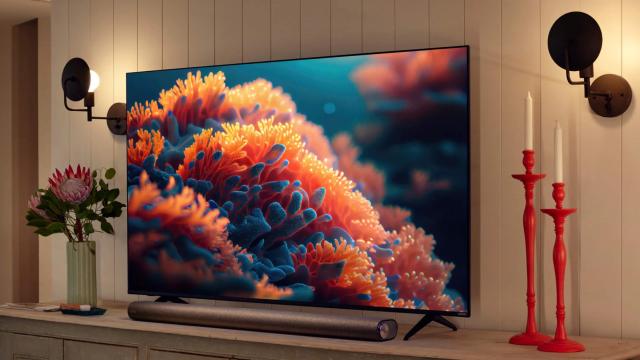TV maker Vizio is being taken to task for making big claims of excessive refresh rates on its TVs when, in reality, an “effective frame rate” is based on software meant to give the impression of smoother viewing. While folks who bought a Vizio TV shouldn’t expect any big payout, it’s a strong reminder not to take big framerate claims on your next television or monitor at face value.
Vizio buyers filed a class action lawsuit back in 2018 arguing that Vizio selling its TVs with that “effective refresh rate” tagline was false advertising. The case was being seen by the Superior Court of California in Los Angeles and was set to go to trial back in March before the company and lawyers decided to settle. According to the settlement documents provided by the law firm, the TV maker agreed to stop using “effective refresh rate” as an advertising tactic.
The “Effective Refresh Rate” label has been one of those confounding bits of puffery slapped on the side of so many televisions and monitors. You’ll see plenty of 4K TVs sporting claims of 120 Hz or even 240 Hz for such low prices, but it’s all a fair bit of smoke and mirrors as the manufacturers use motion blur software to smooth out the image on-screen. Vizio has previously defined this feature as “motion clarity” and “Dynamic Motion,” but other manufacturers use their own terminology.
It’s why if you visited your parents’ house over Christmas and thought their TV looked a little too smooth—AKA the dreaded “soap opera” quality—then it’s because they’re using default image settings to reach that “effective” framerate.
Those who bought a Vizio TV between April 30, 2014, can now apply for up to $US50, depending on how many claims are filed. You have until March 30 2024, to apply. Vizio also promised to provide a one-year limited warranty package for their TVs valued at around $US25.
You probably already suspected it, but as part of the settlement, Vizio doesn’t have to say it did anything wrong, and they don’t have to recall any TVs to change the on-box advertising. The company’s latest 4K smart TVs don’t use the “effective” refresh rate in their advertising but still promote the “Dynamic Motion Rate” of 120Hz on a native 60Hz screen.
Though Vizio isn’t alone in claiming “effective frame rates” on TVs, and we doubt this settlement will make much of a difference in how other manufacturers advertise their products.
The push for higher and higher-fidelity TVs has put extra emphasis on refresh rates as a selling point, but most manufacturers use vague terms to hint at higher framerates. You can definitely see a difference going from 60Hz to 120Hz, but most consumers won’t notice any real change in quality between 120 Hz and 240 Hz. Gaming-focused screens are different since higher refresh rates can make a difference at a competitive level, but most major gaming tournaments standardize their monitors to 240Hz or 144Hz.
And if you’re tired of watching soap opera-style TV at your parent’s house when you visit, this settlement may finally be a good way to convince your stubborn father to let you turn off motion blur.
If your folks tell you they “don’t mind it” when it’s on, they probably won’t care or even notice it when it’s turned off.
